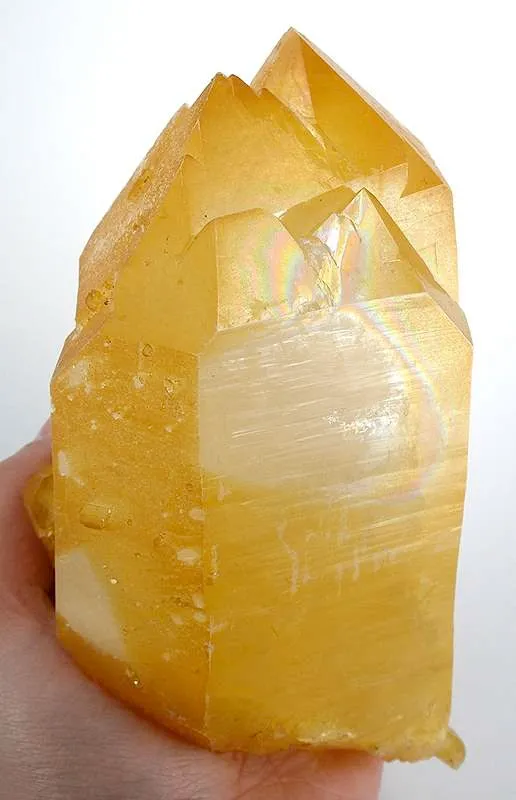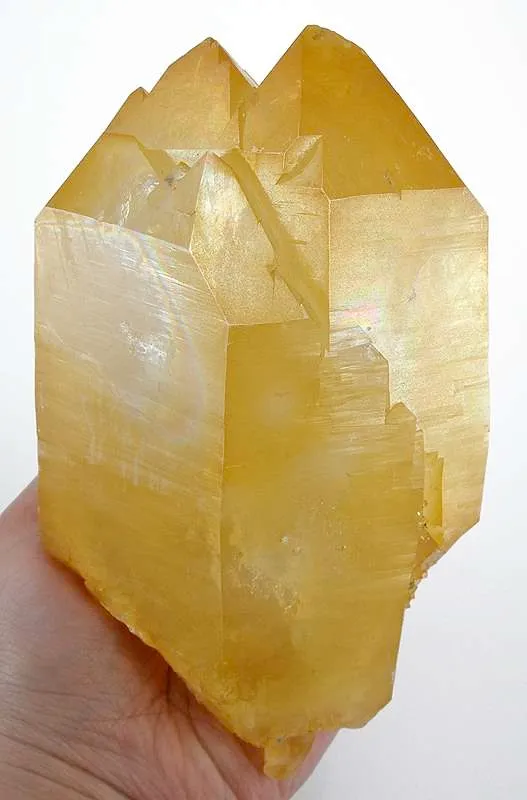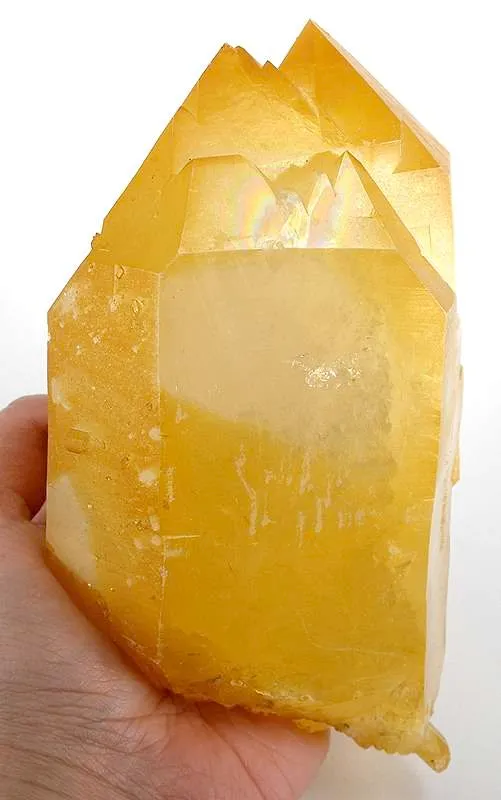0
added on 10/23/2024
A most unusual, very colorful quartz specimen which has not only display aesthetics but also locality value and provenance. It is a very large example of this rare style of quartz from Switzerland, considered a highly desirable part of any Alpine collection because they have so much color pizzazz, and are so unlike other Swiss quartz styles with which we are more familiar. The crystal is complete all around, a floater, with no points of attachment that is fully terminated on both ends. It is pristine save for a few tiny, insignificant dings. The color is unearthly, as if you took the iron and embedded it in layers to yield a rainbow of refracted colors - indeed, you SEE rainbows shimmering just under the surface on the main faces of the front. This is not citrine (where iron is part of the crystal structure unit cell), rather it is quartz with iron stain incorporated into the matrix but not part of the crystal structure. This specimen was purchased by Pete Bancroft in the 1950s or 1960s, he recalls. He sold it to a local quartz collector in San Diego area in the 1970s (Alice Walters), and there it remained until she sold her collection about 4 years ago. It then went into the most prominent collection of classic, cabinet-sized Swiss minerals in the US, that I know of: that of Karl Kempf in Arizona (a longtime mineral colelctor specializing in this region). This collection was sold off by Wayne Thompson last fall, and now the piece is back on the market. Original label in Bancroft's hand is included.
View more Known provenance
2024/08UnknownNot disclosed—
Iron from Switzerland Sales Data
Total Items Sold0
Total Value$0
Loading sales data...
Click on chart columns to view sold specimens in each price range!
All Sales
Loading specimens...


